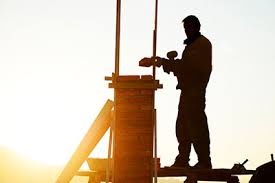The National Fire Protection Association recommends homeowners get their chimneys, fireplaces and vents inspected and cleaned at least once a year. If you’re planning on hiring a chimney sweep to do this for you, make sure they have a solid reputation with good customer reviews.
Chimney sweeping is usually done in two stages. Your chimney sweep will either start at your fireplace opening and then work their way up, or they’ll begin on the roof and work down.
During the Inspection
Regardless of how clean your fireplace and chimney are, it’s still important to have them inspected. A professional can identify problems such as deteriorated liners, flue leaks, cracks in the masonry, and more. Having these issues identified and repaired can help prevent more costly chimney repairs down the road.
Chimney sweeps use specialized tools to remove soot, creosote, and other debris from your fireplace and chimney. They may start at the flue opening or, in more serious cases, begin at the roof’s chimney access point and work their way down. They will also use special brushes to remove glazed creosote, and HEPA vacuums to minimize dust and other contaminants from entering your home.
It goes without saying that your fireplace should not be lit before your appointment, but it’s worth mentioning because it’s crucial to the chimney sweep’s safety and effectiveness. A clean chimney easily carries carbon monoxide and other toxic byproducts up and out of the home, but if the flue is blocked, these fumes can enter your living space. Visit for chimney sweep aitkin mn.
During the Cleaning
As part of the chimney sweeping process, most sweeps will also perform an inspection. This is essential for homeowners, as it allows them to learn about the overall condition of their chimney and fireplace system. For example, the flue liner may be obstructed with creosote or other debris, which can restrict air flow and increase the risk of chimney fire.
During the cleaning process, a chimney sweep will use a brush to remove creosote and other debris from the chimney lining. They may work from the fireplace opening or the roof, depending on the situation.
It is important to ensure the fireplace is cool before the sweep arrives. This will help them to avoid being injured by scalding water or falling debris. Additionally, you should ask the sweep whether they recommend any repairs before they start working. This is because some masonry services are outside of the chimney sweep’s expertise. For instance, if the chimney is in need of new flashing or a damper upgrade, they may suggest a professional to complete these services.
During the Repairs
When a sweep is working on your chimney, it’s important to remember that they will probably make a bit of a mess. However, there are ways to help mitigate this. First of all, ensure that your fireplace is completely cool before the sweep arrives. Additionally, you should move any furniture away from the fireplace. Finally, if you have any rugs or tapestries in the room, you should consider covering them with plastic.
When the chimney sweep is finished, they will usually give you an overview of their findings and make any recommendations they see fit. They may suggest that you install a chimney balloon to prevent heat from losing through the chimney, or they might recommend upgrading your damper so that it’s more resistant to rodents and other critters. They will also let you know if they find any cracks or other damage to your flue liner, which can allow dangerous gases and embers to escape into the home.
During the Final Inspection
A professional chimney sweep should have the tools and equipment necessary to clean your fireplace and chimney. To protect your home during the cleaning process, they’ll lay a drop cloth or plastic around your firebox and may also want to cover any nearby furnishings.
Your chimney sweep will use specialized brushes to remove obstructions from the smoke chamber, firebox, and damper. They’ll also brush the inside of the flue, chimney liner, and chimney cap. If glazed creosote is present, your chimney sweep might need to apply a chemical treatment to change its texture and make it easier to remove.
Your chimney sweep should also have a dual HEPA filter vacuum running during the entire sweeping process. This will keep dust and soot particles from escaping the chimney and damaging your home. It’s important that your chimney sweep is fully insured, too. This shows that they’re dedicated to putting homeowner safety first. They’ll be able to show you proof of insurance so that you can feel confident in their work.
